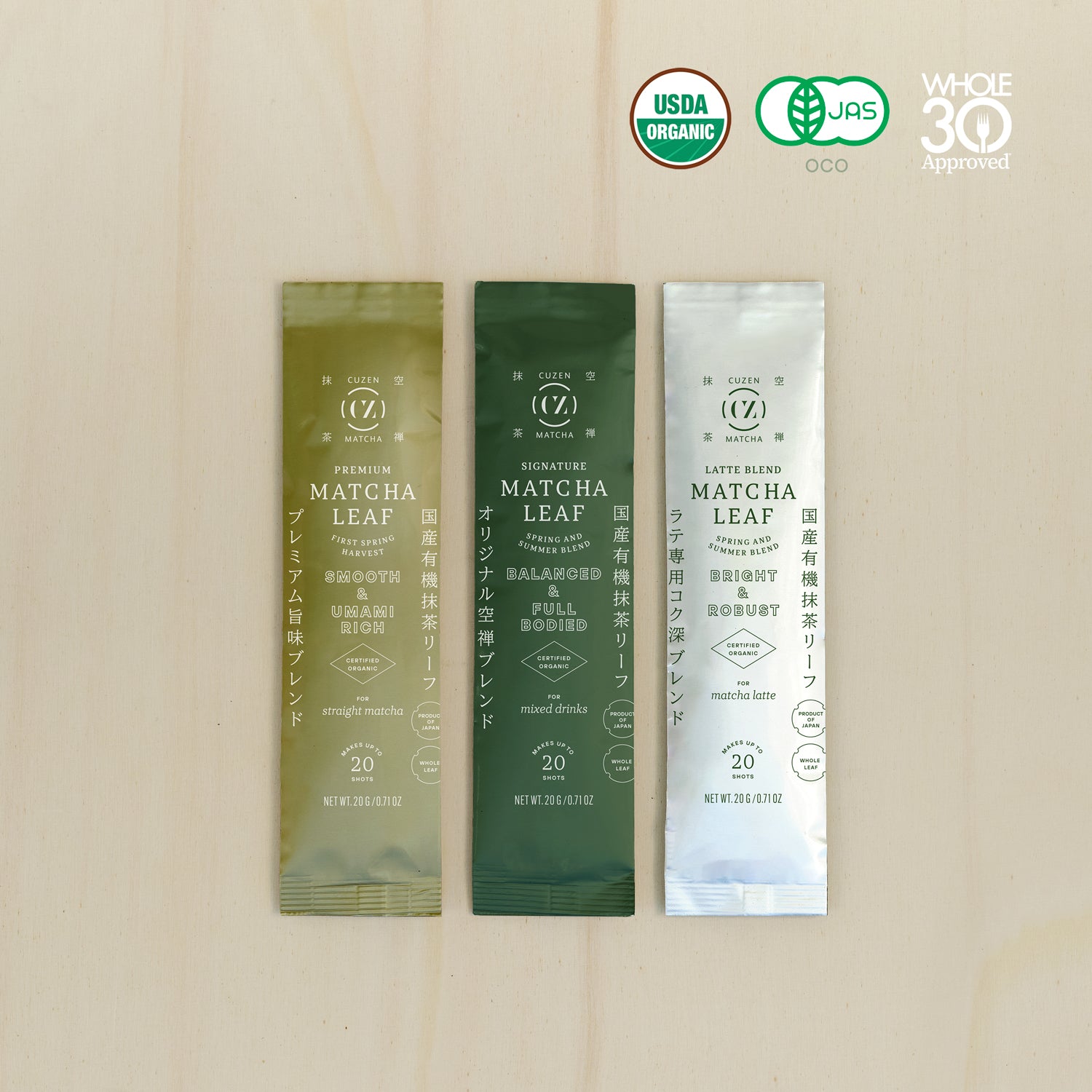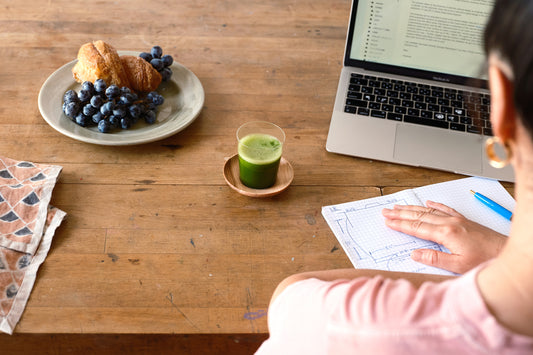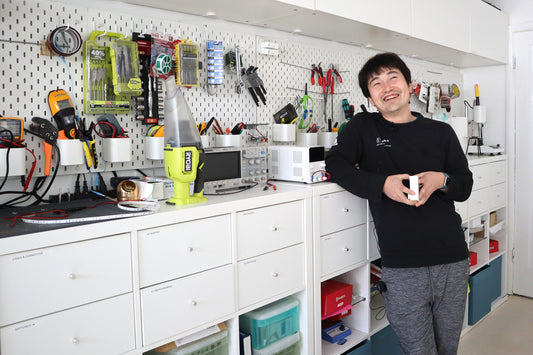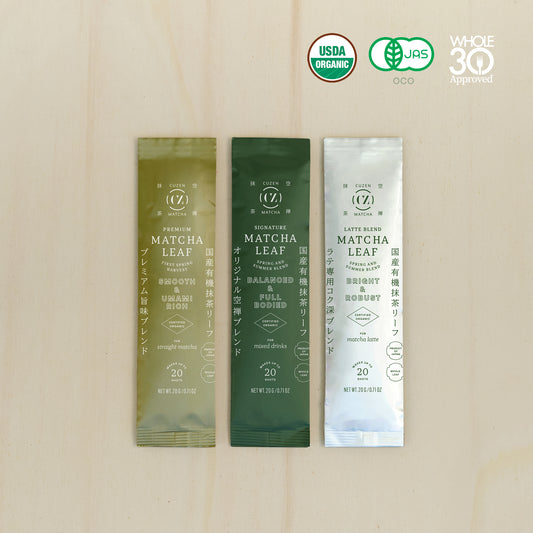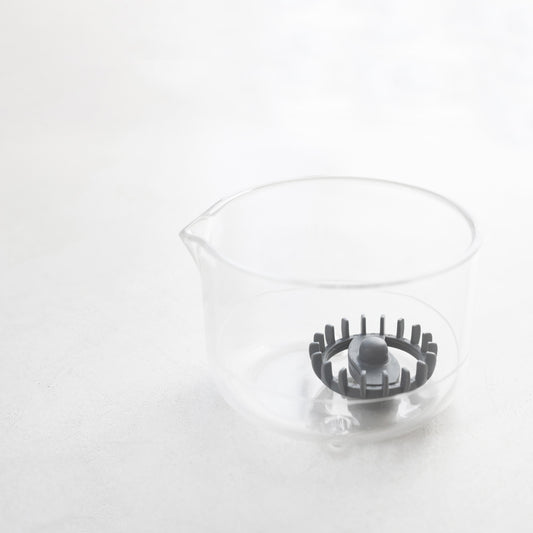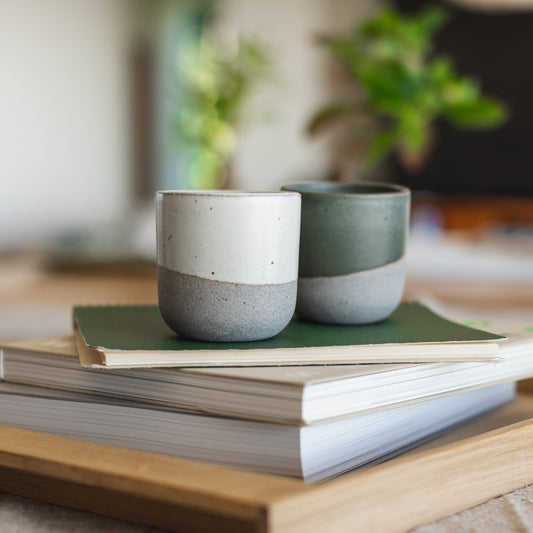

Home of Cuzen Matcha leaves
To be aware of the tea production–from harvest to delicious cup of tea–can only deepen your daily matcha ritual. See farm and factory images and hear from the farmer himself on this thoughtfully-designed process.
Contents
- A visit to a tea farm
- From harvest to cup
- Uniquely-crafted machinery
- With ingenuity and diligence
1. A visit to a tea farm
In Kirishima, Kagoshima Prefecture, in the early summer, the tea leaves begin to open wide, making it the peak season for second harvest. The harvest time is based on a leaf’s appearance and the way it opens up. The farmer knows the perfect moment through years of experience.
After the leaves are picked, a truck rumbles back to the factory, hauling as many as 700 kilograms of tea leaves for processing. Freshly-harvested tea leaves are stored in a refrigerator to prevent fermentation. After refrigeration, the leaves are then made into tea.
Tea leaves are very delicate. The harvesting time and preservation methods are both very important. Our supplier explained, “Even if the picked tea leaves are left for only one or two days, the leaves’ fiber content increases and they will harden. The tea will then lose its freshness and take on the aroma of bancha, a different type of tea.”
2. From harvest to cup
The process of tea production is as follows.
Washing → Steaming → Cooling and first drying → Second drying → Finishing → Packing → Shipping
Washing
Tea leaves are washed to remove insects and dirt and then spun to remove excess water.
Steaming
Our farmer shared that the steaming process determines the quality of tea and is the most important part of the tea-making process.
Cooling and first drying
After the steaming, the excess water is removed from leaves as they are cooled in a huge wooden and net structure built by the employees. This is possibly the most visually charming part of the entire process. The tea leaves appear to be a tiny flock of dark-green birds, fluttering about on the currents of air as it flows through the structure.
It is crucial to cool the leaves immediately after steaming to preserve their color and aroma. It also keeps them from sticking and overlapping, which would prevent them from completely drying in the next step of the process.
Second drying
Tea leaves are spread evenly across a conveyor where the water continues to evaporate and the leaves are evenly dried.
Finishing
The leaves are now dry enough for stem and vein removal. To be completely sure all the last bits of moisture have been removed, there is a last and final drying process. Leaves are broken into small pieces. This makes them mill-ready and more easily ground.
3. Uniquely-crafted machinery
The factory machines are very unique. The farmers are not only involved in designing, improving and modifying the machines, but sometimes they even build the machines with their own hands.
A control room was established so that temperature, leaf weight and drying time data could be managed by a computer. The production process is carried out with detailed adjustments of temperature, weight and other variables.
4. With ingenuity and diligence
After visiting the factory, and seeing the beauty and brilliance of their methods and processes, we became excited about sharing the story of sustainable tea production with Cuzenists.
The tea leaves are not only cultivated with intention, but also carefully controlled in a meticulous environment, in order to produce delicious, umami-filled, organic matcha. Our suppliers are problem-solvers, trustworthy and thorough. They inspire us to excellence and give us a heightened respect for the tea we provide to our circle of Cuzenists.
Related products
-
Organic Matcha Leaf packets
Regular price From $561.00 TWDRegular priceUnit price / per$561.00 TWDsale From $561.00 TWD -
Matcha Maker Starter Kit
Regular price $9,859.00 TWDRegular priceUnit price / per -
Whisking Cup
Regular price $495.00 TWDRegular priceUnit price / per -
Perfect Matcha Latte Cup (Set of two)
Regular price $3,627.00 TWDRegular priceUnit price / per
